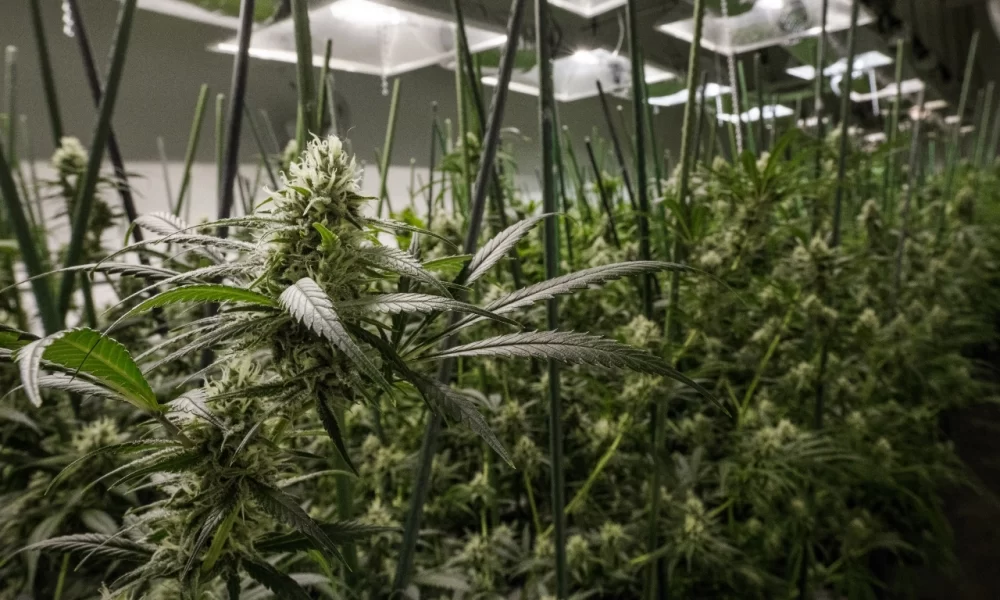Business
Canadian marijuana entrepreneurs shift focus to ‘micro’ licenses

Cannabis entrepreneurs are increasingly turning to smaller micro-cultivation facilities to manage costs and produce higher-quality marijuana at a time when the industry is facing a glut of “standard” product and falling prices.
That shift ultimately could help shrink some of the Canadian cannabis industry’s current supply glut, given that micro-class licensees operate smaller cultivation facilities.
At the end of 2022, Canada’s total indoor growing area was 28% lower than the all-time high reached in 2020.
Canada’s federal government last year handed out only 58 standard cultivation licenses, the lowest annual total since recreational cannabis was legalized in late 2018.
Unlike standard-class licenses – which face no size limits – micro-class permits allow cultivation only within a surface area of up to 200 square meters (2,150 square feet).
In 2022, the 130 new micro licensees outpaced standard ones for the second year in a row, and experts don’t expect that trend to reverse.
In 2021, there were 106 standard-class licenses compared with 134 micros.
That’s a reversal from the first three years of regulated cannabis production, when Canada handed out 396 standard licenses and 46 micros.
Experts say entrepreneurs are drawn to micro licenses because:
- Micro-class licenses generally have lower startup costs compared to standards.
- Micros can scale up to a standard-class license through a Health Canada-issued amendment.
- The industry is already swimming in overproduction of low-quality cannabis that generally comes from “standard” production sites.
Mitchell Osak, president of Toronto-based Quanta Consulting, said consumer demand for craft, or high-quality, cannabis is also a factor.
“Micro licenses became more popular, reflecting a transition in consumer demand to craft-type of products,” he said.
Another factor that might have contributed to increased interest in micro-class licenses is a rule change by Health Canada shortly after the launch of the country’s recreational market in October 2018.
In mid-2019, seven months after legalization, Health Canada said all new applicants would have to have their facility fully built out when submitting an application.
Previous to that, applicants were able to get approval for a building site before it was completed.
That effectively increased up-front costs for any large facility seeking a standard-class license.
More interest in craft
Consumers appear to be weighing price sensitivity with a desire for the highest-quality products they can afford at a particular price point.
Osak said that is leading consumers to mirco-cultivators.
“It’s difficult to grow craft, high-THC, premium products in a large grow that has a standard license; these products can be grown and processed easier and at target batch quality in a smaller facility, which is supported by a micro license.”
Generally, smaller production schemes have a reputation for producing better-quality cannabis.
Typically, standard licenses were secured for larger grows, Osak said.
“Many of the existing standard licenses were used to address growing the value, or low-cost, segment,” he said. “At the same time, some of the market shifted to premium, high-potency, craft-quality products.
“That makes sense financially. Their higher cost required more production to get a return on investment.
“Finally, like the wine industry, some consumers seek out and prefer authentic; but legal, craft products can only be found in a micro-licensed facility.”
Businesses with standard-class licenses are also seeking out production deals with micro-class license holders, such as Canopy Growth and Indiva.
“Some operators have figured out that getting a micro license, focusing on cultivation and using a large LP for distribution/retail activation or genetics is a more efficient and low-cost way of getting their weed to the market,” Osak said.
“It’s now very common for large LPs to outsource their craft production to micro licenses. Everyone wins.”
Too much cannabis
The shift to businesses with a much smaller growing area also in part stems from the fact that Canada faces a massive glut of low-quality cannabis.
Nationwide inventory of dried cannabis, both packaged and unpackaged, jumped to an all-time high of at least 1.47 billion grams (3.2 million pounds) as of December 2022, according to the latest data from Health Canada.
The federal regulator tracks overall unsold stockpiles of licensed producers, wholesalers and retailers.
The inventory, predominantly held by licensed producers, is approximately four times the amount of dried flower and pre-rolls sold at retail in Canada that year, according to Seattle-based cannabis data firm Headset.
Despite the record-high inventory levels, there are signs the growing focus on smaller cultivation businesses could alleviate the supply glut.
At the end of 2022, Canada’s indoor growing area where cultivation activities occurred stood at 1,595,724 square meters (17.2 million square feet), per Health Canada’s most recent data.
That’s 28% lower than the all-time high of 2,217,216 square meters reached in 2020.
Source: https://mjbizdaily.com/canadian-cannabis-entrepreneurs-shift-focus-to-micro-licenses/